Notes phytochemist. Persimmon
We will open to our children
Truth - they do care,
We will say: "Amazing is near,
But it is forbidden!"
V.S. Vysotsky
When dealing with green chemistry solutions , I often have to deal with plants (and their chemical components). Many acquaintances know about this and are interested in the occasion, but what is interesting in this vegetable, and what is in this fruit. And as a rule, the answer like "vitamins and minerals" does not satisfy human curiosity. Therefore, I, occasionally being engaged in one or another representative of the flora, wrote in my facebook a note with an indication of interesting facts / chemical compounds that can be found in this plant.
And now, in anticipation of the New Year, many are purchased persimmon. Know that it is useful. But what, to whom? On the one hand, I am pleased that there are a large number of people who don’t have enough of a video clip or a couple of words “get out of the way” in the description, and on the other hand, it’s sad because of this rampant tendency to simplify. Therefore ... therefore if you want to learn more about natural antioxidants , expand your knowledge of the medicinal properties of persimmon and understand why persimmon and Coca-Cola are made for each other - follow the cat ...
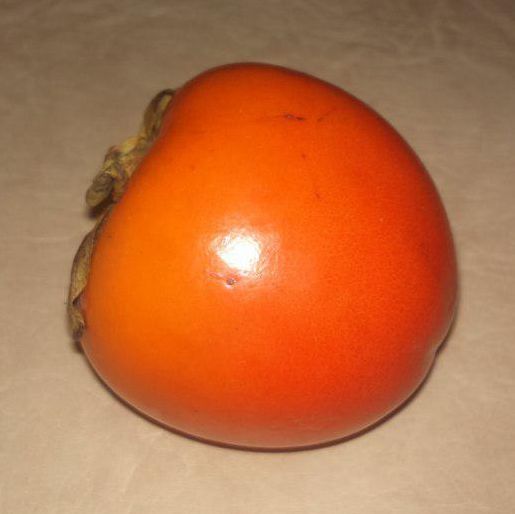
Despite the fact that we live in the enlightened age of the dominance of synthetic drugs, medicinal plants do not lose (or even acquire additional) their relevance. In Belarus since the times of the Great Patriotic War and the indiscriminate partisan movement, considerable attention has always been paid to medicinal plants as a replacement for scarce drugs and additions to traditional therapy. Echoes of this tradition are heard even now, at least in some tourist schools, where there is always one or two lectures devoted to medicinal and poisonous plants in the course of lectures on
So, hot favorite persimmon, can and should be considered not only as a tasty and healthy fruit, but also as a medicinal plant. You can start with the name. The genus persimmon in Latin sounds like Diōspyros and in translation means "Zeus wheat" ~ "food of the gods". Mixed translations sometimes lead to various inappropriate (but beautiful, which is already here) interpretations, such as "divine fire", "fire of Jupiter", "pear of God", etc. In my opinion, it is closer to the truth than the usual "persimmon", or khormâlu - "chormal", to be exact, which in translation from fraternal Farsi means "date plum". All because the taste of dried persimmon resembles the taste of a date.
If you write “persimmon use” on Google, then in 99% of cases something like:
In persimmon get along with trace elements, vitamins and antioxidants. Persimmon is rich in such substances as calcium, potassium, phosphorus, magnesium, iron, iodine, glucose. It contains carbohydrates, useful acids, proteins, tannins, ash, vitamins A, C, and R. ... In addition, the use of persimmon is in the presence of such a substance as pectin
Frankly speaking, for me personally, one of the most similar copywriting delights plying from site to site is a little uneasy. And of course, it is not clear what this persimmon is more useful than an apple or carrot. In most cases, anyone honors, thinks “why pay more if there is no difference” and buy a banana ( but not before the New Year ). But persimmon, to put it mildly, is a very difficult fruit.
I think for sure many have seen the movie DMB. I personally for a long time, jokes for the sake of the question "Who are you," replied the famous quote "I - Captain Sebastian Pereira, merchant" ebony "" (in fact, the director took the quote from the Soviet film 1945 (update from ontan ) according to the novel Fifteen-year-old captain Zhulya Verna). So, ebony, it is an ebony tree- it is persimmon wood of some varieties. And the "ebony" in the quote is slaves, such a cunning efweism, yes.
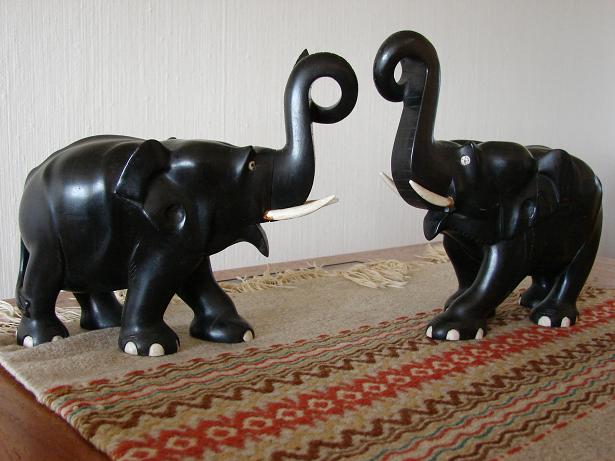
Real wood ( not slaves ) is worth noting, incredibly beautiful, durable and expensive. It is so expensive and rare that if you suddenly read a fairy tale about a magic wand or a casket in which a magical artifact is stored, you should know that these objects are made from black ebony with a probability of 99%. It is quite possible that this belief came from the Middle East, where Arabs and Persians still believe that genies inhabit the trunks of persimmon.
Persimmon in general in the folklore of many nations takes a prominent place, I immediately remembered the Japanese fairy tale " Monkey and Crab ", which I read in childhood. Her plot is built on the struggle for the possession of persimmon.
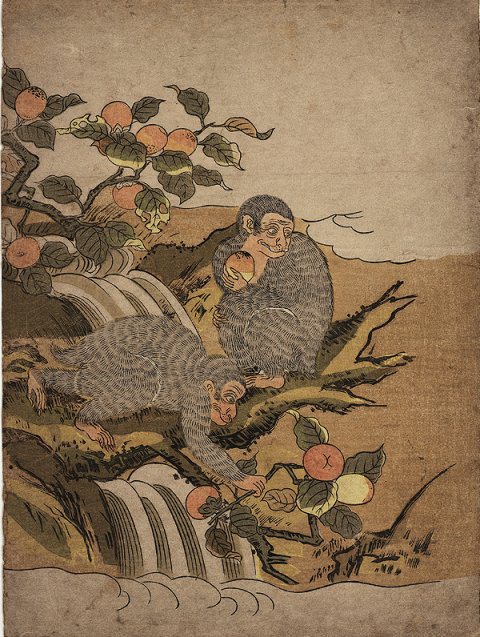
В совершенно иной версии сказки, когда обезьяна взбирается на дерево и забирает всю хурму себе, краб советует ей повесить корзину с фруктами на тонкую веточку. Когда обезьяна поступает по совету краба, ветка ломается и хурма из корзины рассыпается по земле. Краб быстро хватает плод и утаскивает его в нору. Рассерженная обезьяна решает испражниться на краба, и пристраивает свой зад к отверстию норы. Краб, тем временем, быстро обривает ягодицы обезьяны, оттого, будто бы, по сей день обезьяны имеют голый зад, а на клешнях крабов растут волоски.
After the mention of fairy tales, you can safely move on to things more rational and objective - to the chemical composition and useful substances and compounds. If you briefly describe why persimmon is useful, in my opinion, you should get something like "Iodine and antioxidants." As for iodine, I will not be mistaken if I say that since childhood every advanced Belarusian ex-USSR child has known that “persimmon will save him from Chernobyl”. This is generally true for iodine-131 . By the ability to accumulate iodine , this fruit is second only to feijoa., but at the same time clearly bypasses the latter in terms of availability in stores and markets, and does not have such a strong seasonal binding. It is worth noting that the ability to accumulate and maintain it is not the same thing; in order to contain iodine, the persimmon tree must grow in conditions where iodine is available in the environment, and this is not everywhere. But in coastal countries, problems should arise. On average, the content varies around 60 µg / 100 g of product, which is about a third of the daily requirement.
The main therapeutic effect of persimmon is due to the fact that its composition contains a wide range of substances with antioxidant activity. About antioxidants today did not hear just lazy. Living organisms are under constant oxidative stress due to the action of free radicals, reactive forms of oxygen compounds and prooxidants (enhancers of oxidative processes) generated exogenously (heat and light) and endogenously (hydrogen peroxide and transition metal cations). Therefore, in most biological objects there are antioxidant systems for controlling free radicals, catalyzing lipid oxidation, oxidation intermediates and secondary degradation products.
Antioxidants are classified into primary (long-acting) and secondary (synergistic). Secondary are divided into substances quenching singlet oxygen (sulfites, vitamin C, etc.), compounds forming chelate complexes (citric acid, lecithin, etc.), specific antioxidants (thiodipropionic acid, nitrite, zinc, selenium, etc. .)
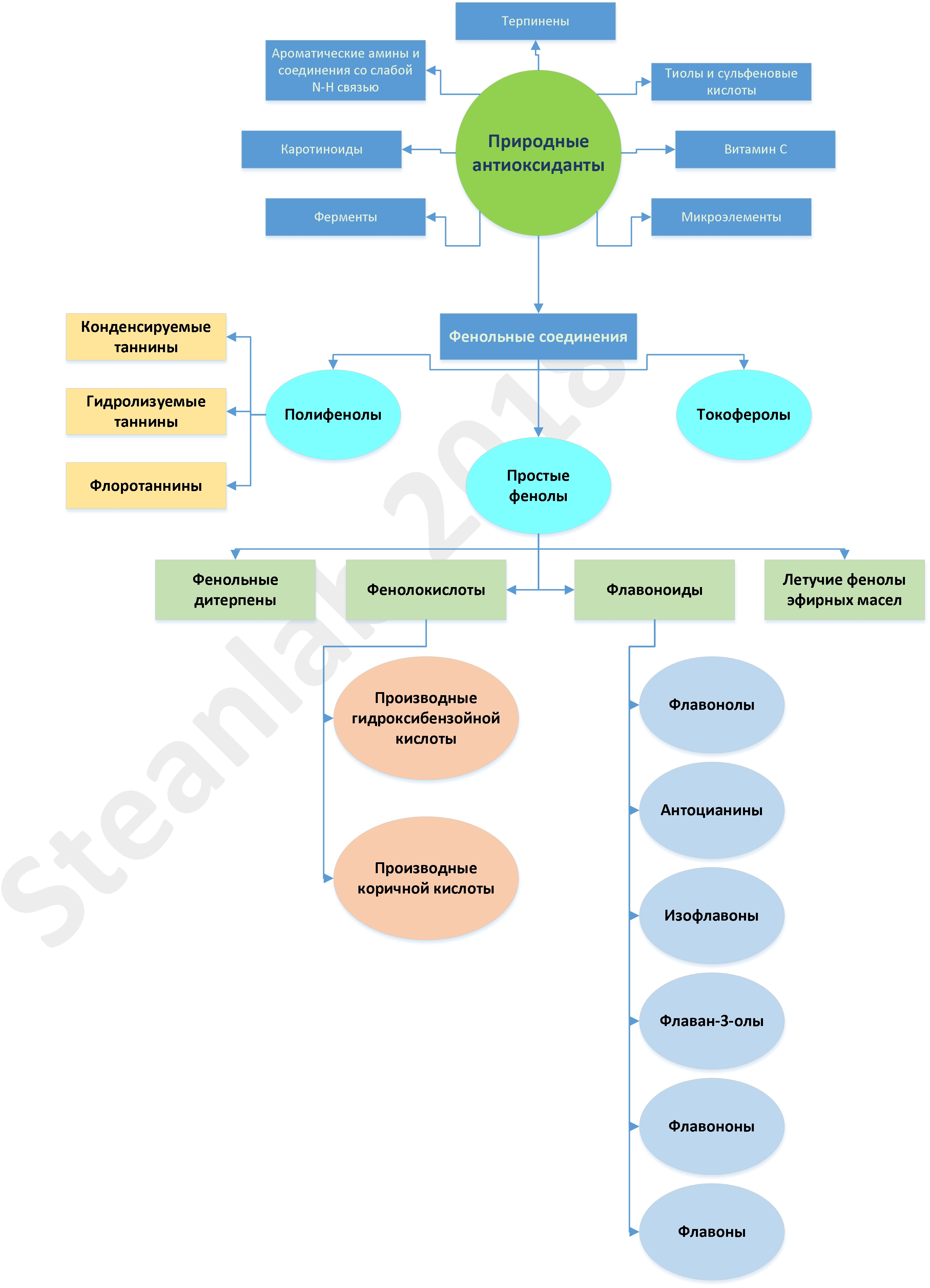
Primary antioxidants include phenols and secondary arylamines, secondary - organophosphites and thioesters. Primary antioxidants can be active traps for free radicals, donors of hydrogen atoms or have the property to break the chain of a radical reaction. Synergistic antioxidants have many different mechanisms that can act as donors of hydrogen atoms for phenoxyl radicals, promoting the regeneration of primary antioxidants. Secondary antioxidants decompose lipid peroxides and form stable end products. Some of them can effectively deactivate peroxyacids. Other compounds act either as primary antioxidants or as synergists. For example, nitrites and nitrates convert hem-containing proteins into inactive forms and form chelate complexes with iron, copper and cobalt. Zinc inhibits lipid peroxy-oxidation at the membrane level, preventing iron binding. Selenium is necessary for the synthesis and activation of glutathione peroxidase, the main cellular antioxidant enzyme that binds dissolved oxygen and prevents the accumulation of hydrogen peroxide.
The main natural antioxidants belong to the category of phenolic compounds (and there are a great many), so I will not load the note with a general classification of phenolic compounds, but will focus on what is present in persimmon. You can start with carotinoids, compounds of the tetraterpenes class. The most famous are b-carotene, and xanthophils - lutein, zeaxanthin, canthanthanthin and astaxanthin. In general, more than 600 carotinoids are known today, but only 20 (!) Of them are found in human tissues. Important for us are the pigments present in the retina (see my article How to escape from hares. Instructions for combating ultraviolet radiation ) - lutein , xanthine and zeaxanthin. This is how lutein looks "in life":

Why is it important to get these pigments with food? And because, for example, the human body is not able to synthesize lutein, and when working actively associated with the light destruction of this (and others) pigment, it is necessary to supply it to the body from the outside. Here persimmon can perfectly help. The only caveat, for the absorption of lutein, it is necessary to consume some amount of lipids (fats), i.e. there is a persimmon with something fatty. No wonder in Egypt, for example, they like to use persimmon in salads with goat cheese and butter. By the way, in immature persimmon (with an astringent taste) lutein is much more than in mature, soft. For the remaining pigments - with maturation, the content increases. An interesting note for supporters of "pharmacy antioxidants," including all sorts of "blueberry + lutein" is that that at high concentrations, many carotenoids (including lutein) lose their antioxidant activity and become prooxidant (!!). Those. swallowed pills and got the exact opposite effect.
By the way, speaking of carotenoids, I can not fail to mention such an interesting thing as the Great Prismatic Source - the largest geothermal source in the USA, which is located in Yellowstone National Park. Its colors are due to bacteria, which in the process of vital activity produce colored pigments, mainly carotenoids and chlorophyll. Depending on their content and ratio, the color changes, from green to red, through different shades. In summer, the prevailing color is pink-red, and in winter - dark green.
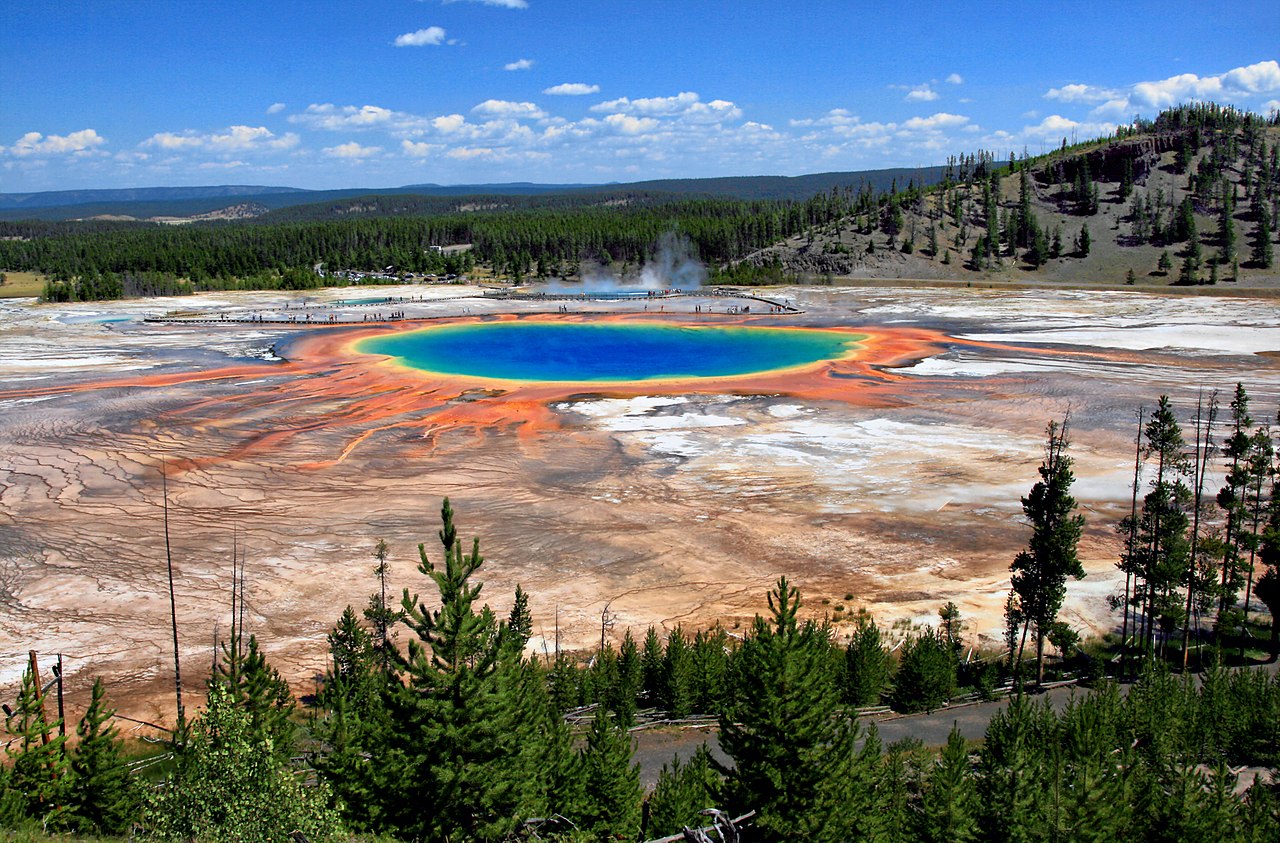
The next step is to turn to antioxidants of polyphenolic nature. Here the primacy over gallic acid and its derivatives - tannins. Tannins have tannic properties and characteristic astringent taste. The tanning effect of tannins is based on their ability to form strong bonds with proteins, polysaccharides and other biopolymers. It is to them that the unripe persimmon owes an astringent taste. The concentration of tannins in persimmon is very unstable and decreases by the time of full maturity. Accordingly, it is not fully ripe unripe persimmon that is bactericidal for external use, but not only tannins can have an antibacterial effect. Persimmon is considered an anti-inflammatory agent and is used in the treatment of dysentery, enterocolitis and bronchitis. The cut persimmon in half in some countries is applied to burns and wounds. True, the same tannins (the so-called.phytobezoar .
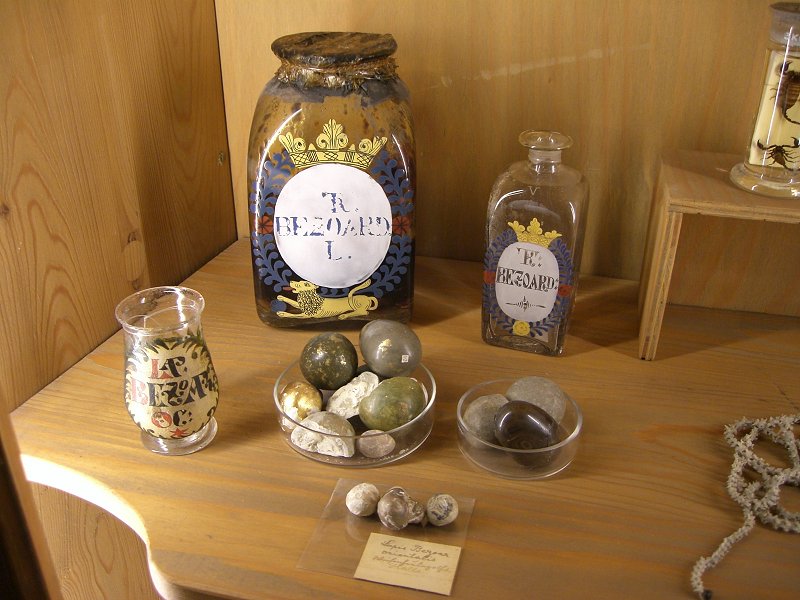
Upon contact with gastric juice, Shibuol will polymerize and glue semi-digested food into a stopper that blocks the stomach or intestines. Therefore, such people need to eat persimmon carefully, moderately :) And if suddenly such a thing appeared - treat it with shock volumes of Coca-Cola. Persimmon and Coca-Cola are made for each other.
Well, for those who can think a sinful business "Persimmon = death from a bezoar" and deprive themselves of this wonderful fruit, just quote from the Russian Wikipedia:
In humans, bezoars are relatively rare. In the world literature until 1991, about 400 cases were described.
А при том, что в природе мучаются безоаром в большинстве случаев безоаровые козлы и отнюдь не из-за поедания хурмы :). Так что — смело покупайте хурму и спокойно встречайте Новый год! :)
Go ahead. Next in line are the antioxidants of the flavonoid group. Here, persimmon is the leader in catechin and epigallocatechin. Epigallocatechin (EGC), for example, is one of the strongest antioxidants, 25–100 times stronger than vitamins C and E and its content in persimmon is higher than in average green tea (all sorts of dairy, etc. - do not count) , bananas, pomegranates, etc. In addition to the actual antioxidant activity (i.e., neutralization of free radicals), EGC has recently been actively studied as a component actively fighting the manifestations of skin aging. I recommend for a more detailed study of the topic of treatment for cancer and HIV - at least look at Russian Wikipedia on the subject of epigallocatechin gallate
Well, for a snack - terpenoids. Of this class of antioxidants, persimmon contains fairly large quantities of a lot of acids: betulinic, ferulic, chlorogenic, r-coumaric, oleanolic, ursolic, and many others, but in smaller amounts to write about them :). So, betulinic acid has a powerful antiretroviral effect (and this is not only influenza, but also HIV), anti-malarial activity (“death to amoebae”), and anti-inflammatory properties. It can inhibit topoisomerase (it is an enzyme that changes the spatial structure of DNA) and thus cut off the development of cancerous tumors (!). Ferulic acid - has antihistamine property (anti-allergic effect), hepatoprotector (treats the liver). Chlorogenic acid has antimutagenic and anticarcinogenic properties.

It has a pronounced hypoglycemic effect (lowering blood sugar levels - the Japanese knew what to drink tea with) and a cholesterol-lowering effect (lowering cholesterol levels). And finally, ursolic acid is already known for the fact that in mice it causes regeneration of the nervous system after injury to the sciatic nerve.
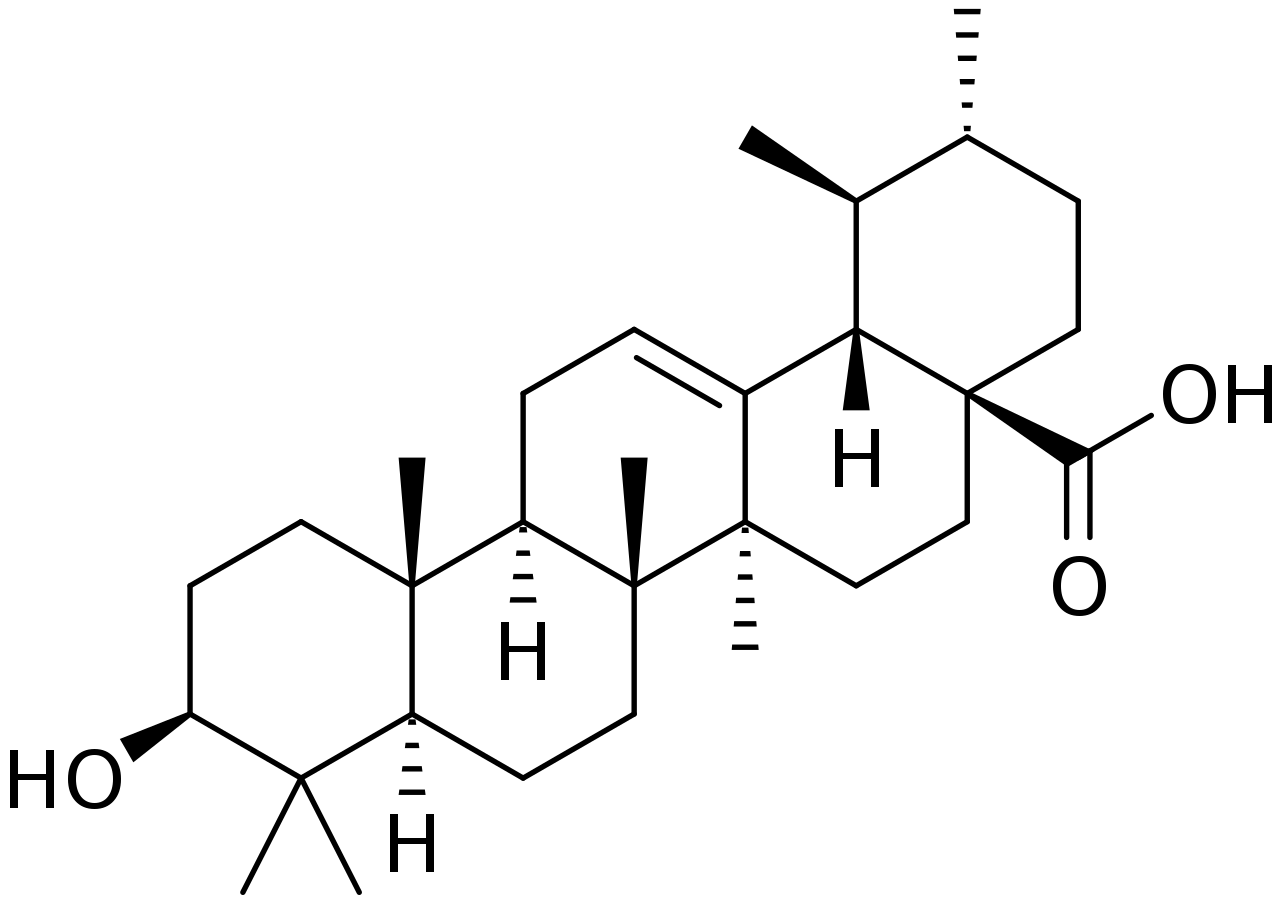
For a more complete study of the medicinal properties of this acid - go to the Therapeutic Uses tab at the link provided.
Well, in the end, a little bit of lyrics. In Georgia and Armenia, many mothers give their daughters persimmon, believing that she will give beauty and happiness in family life to a growing female body. In my phytochemical opinion, it is clear that mothers and mothers are right ... Even if for centuries they have felt that they were right only with their hearts, not having accurate scientific evidence at hand.
Кавказская легенда повествует о матери, у которой росли три некрасивые дочки. Бедная вдова плакала и горевала: ведь дочки подрастали, а в их сторону никто даже не глядел. Как же их выдать замуж?
Однажды, женщине приснился странный сон, явилась к ней молодая необыкновенной красоты девушка и протянула плод хурмы, сказав, что под этот поможет ее дочерям.
Проснувшись, женщина вышла на крыльцо и увидела, что на старом, засохшем дереве хурмы висят три спелых плода. Поняла вдова, что приходил к ней дух дерева.
Обрадованная мать, сорвала их и поспешила к своим дочерям. Каждый день она отрезала по кусочку от каждого плода и давала девушкам.
И произошло чудо – ее дочери стали хорошеть на глазах. Кожа стала гладкой, как у спелой хурмы, волосы, стали блестящими, как семена хурмы, девушки стали стройными, как молодые деревца хурмы.
Вскоре о трех красавицах знал весь край, женихи съехались из далеких и близких селений.
Дочери удачно вышли замуж, а старая мат была счастлива и до самой смерти ухаживала за ожившим деревцом фурмы.
До сих пор в Грузии и Армении помнят эту легенду и, зная о полезных свойствах хурмы, всегда дают ее есть дочерям. Считается, что плоды дарят красоту и счастье в семейной жизни.
On sim note is complete. The conclusion is as follows:
% USERNAME% , passing by a tray with persimmon, take this fruit, remember my note and buy diospyros instead of beer ...
Sergey Besarab ( Siarhei V. Besarab )
ps And every day, the more I learn, the worm of doubt bites me all the more (it becomes more active with the release of new articles in Phytochemistry ), and aren’t we wasting time searching for crutches and developing new synthetic drugs, clinical trials for decades. Maybe the cures for any disease have been invented by nature for a long time, grow for themselves and just wait until we show them to the world ...
pps: And from persimmon you can “make a ball”, thanks to the past user “ without this, I think the post will not be full ” now I know how :)
ppps: Continuation of the "Encyclopedia of Persimmon" -> Persimmon. Instructions for use
ATTENTION! This article does not call for abandoning traditional means of treating diseases (especially in the acute form!). So far, only the antioxidant activity of persimmon has been reliably proven , and it is for her that the first step should be oriented. But everything else is better to keep in mind in bookmarks , just in case.
-Antioxidants in food. Practical applications. Edited by J. Pokorny, N. Yanishlieva. 2001. CRC Press: N.Y. -Madhavi D.L. Food antioxidants: technological, toxicological, and health perspectives food science and technology. 1996. New York: CRC Press. -Brewer M.S. Natural antioxidants: sources, compounds, mechanisms of action, and potential applications // Compreh. Rev. Food Sci. Nutr. 2011. v. 10, p. 221-247. -Leopoldini M., Russo N., The molecular basis of working mechanism of natural poly-phenolic antioxidants // Food Chem. 2011. v. 125, p. 288-306. -Mattila P., Hellstrom J., Torronen R. Phenolic acids in berries, fruits, and beverages // J. Agricul. Food Chem. 2006. v. 54, p. 7193-7199. -Soobrattee M.A., Neergheen V.S., Luximon-Ramma A. et. al. Phenolics as potential antioxidant therapeutic agents: mechanism and actions // Mutat. Res. 2005. v. 579, p. 200-213. -Rice-Evans C.A., Miller N.J., Paganga J. Antioxidant properties of phenolic compounds // Trends Plant Sci. 1997. v. 2, p. 152-159. -Grasmann J. Terpenoids as plant antioxidants II Vitamines and Hormones. 2005. v. 72, p. 505-535. -Kelsey N.A., Wilkins H.M., Linseman D.A. Nutraceutical antioxidants as novel neuro-protective agents II Molecules. 2010. v. 15, p. 7792-7814. -Marzocchella L., Fantini M., Benvenuto M. et. al. Dietary flavonoids: molecular mechanisms of action as antiinflammatory agents II Rec. Patents Inflam. Allergy Drug Discov. 2011. v. 5, p. 200-220. -Havsteen B. The biochemistry and medical significance of the flavonoids 11 Pharmacol Ther. 2002. v. 96, p. 67-202. -Blokhina O., Virolainen E., Fagerstedt K.V. Antioxidants, oxidative damage and oxygen deprivation stress: a review // Annals Botany. 2003. v. 91, p. 179-194. -Al-Agamei A., Lowe G.M., McGarvey D.J. et. al. Carotenoid radical chemistry and antioxidant/pro-oxidant properties // Arch. Biochem. Biophys. 2004. v. 430, p. 37-48. -EdgeR.,McGarveyD.J.,TruscottT.G.The carotenoids as antioxidants review///. Photochem. Photobiol. B: Biol 1997. v. 41, p. 189-200. -Foti M.C., Amorati R. Non-phenolic radical-trapping antioxidants // J. Pharm. Pharm. 2009. v. 61, p. 1435-1448. -Choe E., Min D. B. Mechanisms of antioxidants in the oxidation of foods // Compreh. Rev Food Sci. Food Saf. 2009. v. 8, p. 345-358. -Antioxidants in food. Practical applications. Edited by J. Pokorny, N. Yanishlieva, M. Gordon. 2001. CRC Press: N.Y. -Leopoldini M., Russo N., Toscano M. The molecular basis of working mechanism of natural polyphenolic antioxidants // Food Chem. 2011. v. 125, p. 288-306. -Di Carlo G., Mascolo N., Izzo A. A. et al. Flavonoids: a class of natural therapeutical drugs. Old and new aspects // Life Science. 1999. v. 65, p. 337-353. -Rice-Evans C. A., Miller N. J., Bolwell P. G. et. al. The relative antioxidant activities of plant-derived polyphenolic flavonoids // Free Radical Res. 1995. v. 22, p. 375-83. -Halliwell B., Gutteridge J. Free radicals in biology and medicine. 3 Edition. 2001. New York: Oxford Univ Press Inc. -Palozza P. Prooxidant actions of carotenoids in biologic systems // Nutr. Rev. 1998. v. 56,257-265. -Choe E., Min D.B. Chemistry and reactions of reactive oxygen species in foods // /. Food Sci. 2005. v. 70, p. 142-59. -Viljanen K., Sunberg S.,Ohshima T. et. al. Carotenoids as antioxidants to prevent photooxidation // Eur. J. Lipid Sci. Technol. 2004. v.104, p. 353-359. -Borle F., Sieber R., Bosset J. O. Photo-oxidation and photoprotection of foods, with particular reference to dairy products// Sci. Aliment. 2001. v. 21, p. 571-590.
